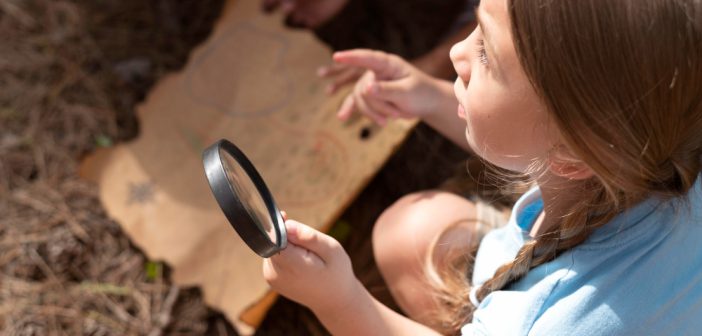Imagine your child unraveling the mysteries of ancient civilizations or understanding the events that shaped our modern world. Learning history at home isn’t just about memorizing dates and names; it’s a journey that significantly contributes to a child’s cognitive and social development. Explore why history is crucial to home education and how it can benefit your child’s growth.
Building a Foundation with History
History is the backbone of a well-rounded education. Integrating resources such as the Tuttle Twins history curriculum into your home education provides your child with a diverse and rich exploration of the past. This curriculum is one of many tools to bring historical events and figures to life, creating a more engaging and comprehensive learning experience.
How Learning History at Home Enhances Children’s Cognitive Skills
When children learn history at home, they unlock a treasure trove of cognitive skills. This exploration into the past does more than tell stories; it shapes their mental abilities profoundly. Let’s delve into how home-based history education enhances children’s cognitive development.
Enhancing Critical Thinking and Analysis
History is not just about what happened; it’s about understanding why. When children engage with historical events, they’re prompted to ask questions like “Why did this happen?” and “What were the consequences?”. This not only hones their ability to think critically but also develops their analytical skills. They learn not to take information at face value, instead evaluating sources’ reliability and arguments’ validity. This skill is invaluable in academic settings and everyday life, where critical thinking is key to navigating a world of complex information.
Boosting Memory and Retention
Recalling historical facts, dates, and sequences is a powerful exercise for the brain. It’s akin to mental gymnastics, where each recall strengthens the brain’s memory ability. But it’s not just about rote memorization. By connecting historical events in a narrative or chronological order, children enhance their memory retention more meaningfully. This skill of remembering and connecting information is crucial in all areas of learning, from science to literature and beyond.
Cultivating Research Skills
History as a subject is a natural incubator for research skills. When children learn about a historical figure or event, they often venture beyond the textbook, seeking additional information from various sources. This research process, whether through books, documentaries, or online databases, teaches them how to gather, assess, and interpret information. They learn not just to consume information but to question and analyze it. These research skills are fundamental in today’s information-rich world and are essential for academic success and professional careers.
Fostering Social Understanding, Empathy, and Real-Life Skills
In the tapestry of home-based history education, an essential thread is its ability to foster social understanding and empathy in children. As they delve into the past, they gain more than just knowledge; they develop a deeper connection to the human experience across time and cultures.
This journey through history educates them about different eras and societies and nurtures their ability to relate to and understand others. Let’s explore how learning history at home can profoundly impact a child’s social and emotional intelligence.
- Cultural Awareness: Learning about different civilizations and cultures fosters a sense of global awareness. Children learn to appreciate diversity and understand the interconnectedness of our world.
- Empathy Development: By studying the lives and struggles of people in the past, children develop empathy. They learn to put themselves in others’ shoes, understanding different human experiences and emotions.
- Ethical Thinking: History often presents moral dilemmas and ethical questions. Engaging with these helps children develop their moral compass in complex situations.
- Informed Decision Making: Understanding history equips children to make informed decisions. They learn from past mistakes and successes, applying these lessons to their lives.
- Enhanced Communication Skills: Discussing historical events and stories improves communication skills. Children learn to articulate their thoughts and opinions clearly, an essential skill in all walks of life.
- Connection to Current Events: History provides context for current events. Children who learn history can better understand the world around them, making them more informed and engaged citizens.
Integrating History into Home Learning
Bringing history into your home learning environment opens creative and engaging educational opportunities. It’s about blending traditional learning with innovative methods to make history informative and truly captivating. Here are some effective ways to integrate history into your home learning routine:
- Interactive Learning: Combine reading with interactive play. For example, after reading about ancient Rome, create a model Colosseum or reenact a historical event. This approach solidifies learning through experience.
- Utilizing Technology: Leverage educational apps and online resources to make history learning more engaging. Interactive timelines, virtual museum tours, and historical documentaries can bring history to life.
- Incorporating Field Trips: Visits to historical sites, museums, or cultural events provide real-world connections to historical learning, making it more tangible and memorable.
The Bottom Line
Teaching history at home is more than a dive into the past; it’s a gateway to building a well-rounded, empathetic, and intelligent individual. With vast available resources, you can make history learning a captivating and enriching experience for your child. By integrating history into your home education, you’re not just teaching facts but nurturing a future thinker, leader, and responsible citizen.




Hi. I’ve seen some videos on social media about some kind of green drink that benefits the skin. Where can you buy it?
I ordered it too and have noticed an improvement in the appearance of my skin and overall health.
When it comes to back-to-school safety, it’s crucial to be proactive and well-prepared. One often overlooked aspect is labeling your child’s belongings, and clear label stickers are a parent’s best friend for this task. These stickers help ensure that your kid’s items, from backpacks to lunchboxes, are easily identifiable and less likely to get lost. By placing these clear label stickers on school supplies, you’ll make it simpler to retrieve misplaced items. It’s a small yet essential step in ensuring a smooth school experience. Additionally, teaching kids about personal safety and maintaining open communication lines is equally significant to keep them secure in the school environment.
Adobe’s AD0-E717 certification is designed to assess your proficiency in digital marketing. To pass this exam, it’s crucial to understand its objectives and content thoroughly. In this guide, we’ll break down the exam objectives, giving you the knowledge you need to succeed.